How to Measure Your Mobile App Marketing

How to Measure Your Mobile App Marketing
Businesses focus on social media marketing and app store optimization (ASO) when marketing their mobile apps, according to our survey of more than 300 app developers and marketers. With the help of a mobile app marketing agency, companies can evaluate their app’s analytics and optimize their marketing practices.
Most companies implement a planned marketing strategy from the beginning of the app development process, according to data we collected on app marketing practices.
Once companies execute an app marketing strategy, how do they measure its success? What resources might they need to help?
With over 5 million apps in app stores, a company must market its app well to help it stand out.
The Manifest surveyed 301 app developers and marketers to determine the most valuable marketing metrics and resources for mobile apps. We found that most businesses:
- Use social media to market their apps
- Value measuring daily active users
- Hire outside marketing agencies
Businesses can use this report to improve their marketing campaigns and learn best practices for mobile app marketing.
Our Findings
- Over one-third of companies (34%) use social media to market their app, while nearly 20% of companies concentrate on app store optimization (ASO).
- Nearly a quarter of businesses (24%) value ratings and reviews from app users to improve ASO, although experts believe this may not be the most important factor.
- Surprisingly, only 11% of companies think revenue per user is the most important metric. Instead, 34% of businesses consider daily active users as the most valuable metric to measure.
- Over one-third of companies (38%) believe 26-50% user return marks a successful retention rate. This data confirms the average app retention rate.
- More than 50% of all companies pay for both search and social media ads. Larger companies are more likely to pay for online ads.
- Over 65% of companies say they use either a mobile app marketing agency or a digital marketing agency to optimize their marketing campaigns.
Most Companies Prioritize Social Media to Market Their App
Social media offers businesses an effective way to connect with users and spread awareness about their app.
Over one-third of companies (34%) direct most of their app marketing efforts toward social media.
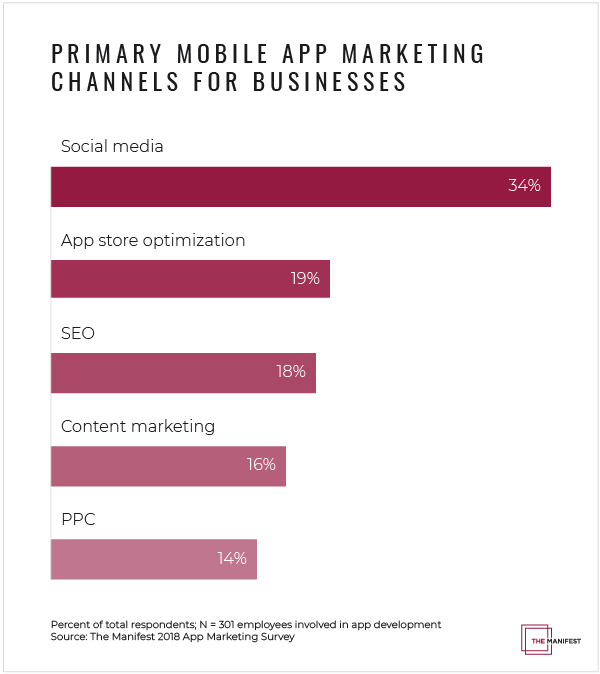
Social media provides a free platform for brands to share their product and encourage app downloads.
The average person spends 5 hours a day on their phone and 116 minutes a day on social media. Companies can capitalize on this time to promote their app.
Still, social media is one of the most difficult marketing channels to execute effectively, according to marketing expert Neil Patel. Most social media users aren’t actively looking for products when scrolling through social media, which means companies must attract their interest.
Joshua Davidson, CEO and founder of Chop Dawg, an app development company for startups and growing businesses, discussed the importance of creating social media content with personality to stand out.
“If you want to improve your social media, post content that resonates with your audience,” Davidson said. “Most people just go through the motions when posting to their social media accounts, worried about quantity—not quality—and metrics that don't matter. Social media should not be treated like an echo chamber; it's about telling a story.”
Social media should not be treated like an echo chamber; it's about telling a story.
Social media can be an effective channel for finding and engaging potential app users.
Use Engaging Social Media Content to Market an App
Companies should tell stories on social media about using or developing their app to relate to their audience.
In 2016, Wendy’s launched a mobile app with features that included personalized offers, fast ordering, and mobile payment.
Wendy’s incorporated marketing for the app into its social media brand voice, connecting with its customers and driving people to download.
Wendy’s Twitter account blew up social media with its sassy remarks to competitors and naysayers. In the example below, Wendy’s used the snarky comments to draw more traffic and customer engagement to its app:
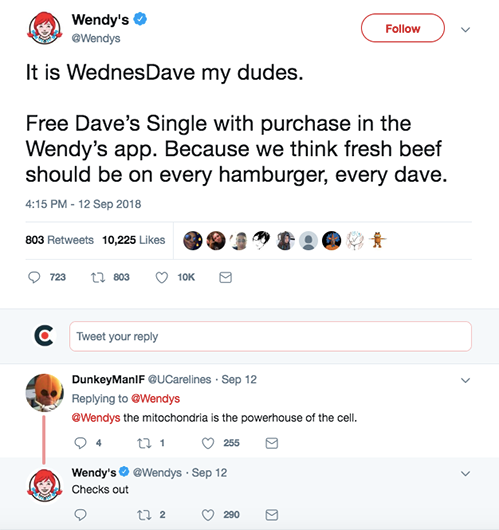
This one tweet received over 10,000 likes and 800 retweets.
Wendy’s use of social media to engage customers on its app has paved the way for future digital marketing campaigns.
Businesses also can offer customer support through social media. Users may see a brand as more responsive if it has active social media channels, allowing deeper customer relationships.
Considering 55% of consumers complain on social media, implementing a customer support channel is essential for engaging users.
For example, Starbucks is known for its quick response rate on social media. The company even has a separate page called “My Starbucks Idea,” where customers can share ideas for improving drinks or service.
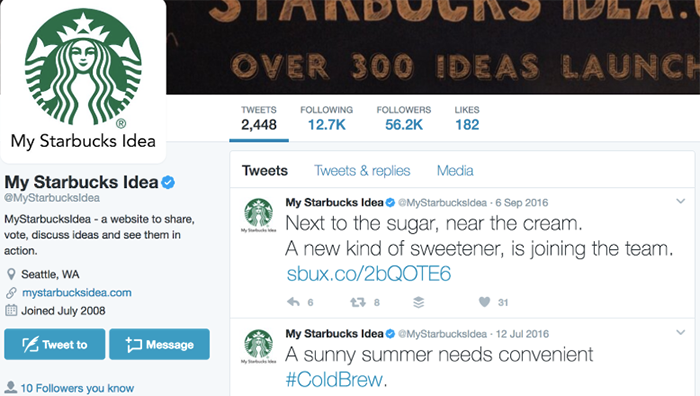
Starbucks allows followers to pitch their ideas and then waits to see the response from other users. If customers have a complaint about a drink, then Starbucks responds and hears other consumers’ opinions. Starbucks has already implemented 277 customer ideas as this group continues to grow.
Social media creates a buzz for an app, more than any website or email. First, though, companies need to foster an audience, vision, and personality to execute a social media campaign effectively.
Make Apps Rank With App Store Optimization
After social media, app store optimization (ASO) is the most popular way to market your app.
Nearly 20% of businesses concentrate on ASO as their lead marketing effort.
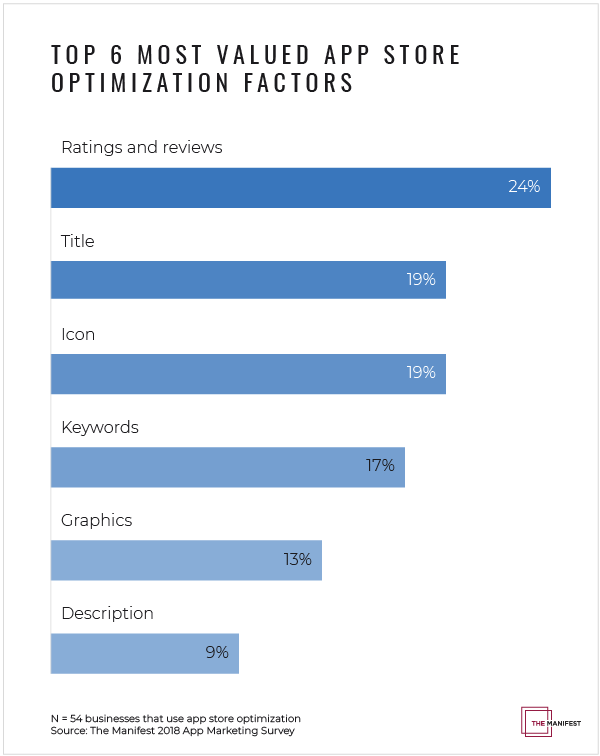
Since 63% of apps are found through app store searches, it is crucial to use ASO to rank high in search results.
ASO depends on an app’s keywords, title, the total number of downloads, and ratings and reviews.
Include Target Keywords in The App's Title and Description
Place keywords in the app’s title and description to make your app easier to find in searches. Keywords tag an app as a possible answer to a search.
KAYAK, the travel and hospitality app, demonstrates how to integrate keywords into the title and description. Below, KAYAK makes sure to include not only its brand name but also the keywords, “Flights, Hotels & Cars” into its title.
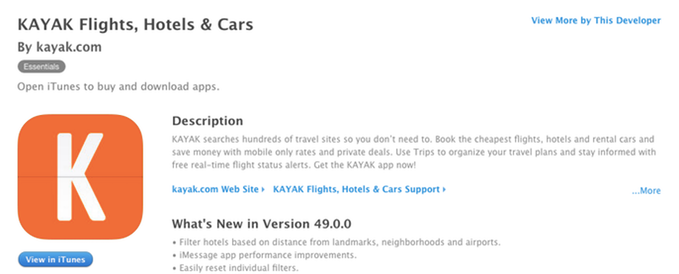
KAYAK makes sure to give a brief, but comprehensive description of the service its app provides. Keywords like “travel,” “cheapest,” “hotels,” and “rental cars” will improve its ASO and allow people to understand what KAYAK does.
Make App Titles Memorable
The title should be easy to remember for potential consumers.
An app's title should be short, memorable, and explain what the app does. Apple suggests 23 characters or less.
It's difficult to change the name of an app after it receives recognition, so companies should think critically about what they want their app to be called.
Increase App Downloads
If an app has more downloads, app stores will prioritize it in searches.
An app’s popularity indicates that users prefer the product more than others because it meets their needs.
Value App Ratings and Reviews
Ratings and reviews play a key role in improving app store rank. ASO recognizes the importance of customer satisfaction and engagement.
Ratings and Reviews Significantly Improve ASO
Ratings and reviews provide a platform for users to communicate their feelings about an app.
Almost a quarter of companies (24%) believe ratings and reviews are the most important element for improving ASO.
Feedback can be vital to improving an app and answering customer demands, said Scott Robertson, CEO and founder of Robertson Communications, a PR firm.
“Great marketing is about listening and responding [to customers],” Robertson said. “If you don’t listen you can’t respond very well.”
To receive good reviews, companies must create a great user experience. Many apps suffer from bad reviews because of features that don’t work or issues with load time.
Although ratings and reviews play a critical part in ASO, experts believe the searchability of your app’s title is the most important factor to optimize search rank.
A survey of 60 ASO experts found that experts believe app stores may weigh an app’s title more than user reviews.
Still, ratings and reviews support an app’s usability and engagement. If a company listens to its consumers, it has a better chance of improving its app’s ranking.
Businesses Value Daily Active Users Over Other Marketing Metrics
Among app marketing metrics, businesses value daily active users the most. By increasing daily active users, businesses can capture more downloads and build stronger customer loyalty.
More than one-third of companies (34%) believe the number of daily active users is the most important metric to track an app’s success.
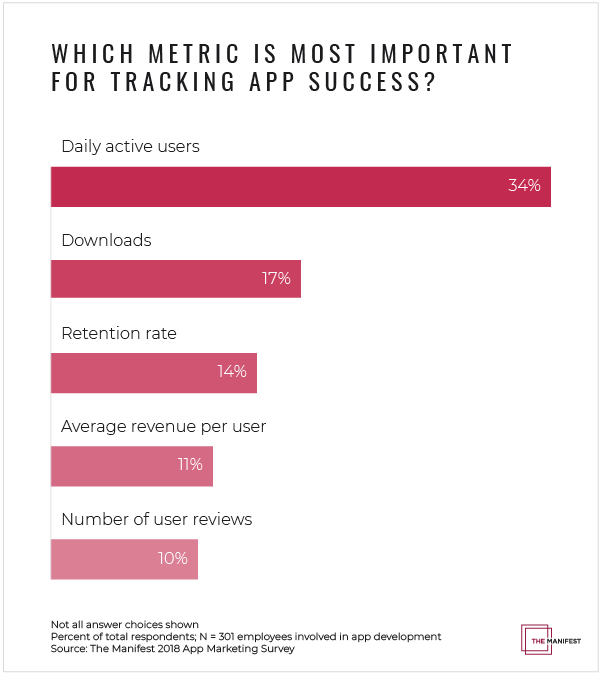
The number of daily active users demonstrates how many unique people use an app every day. If a company markets its app effectively, the number of daily users should increase as more people want to try the app.
The metric “daily active user” became popular in 2012 when Snapchat started advertising impressive daily numbers like “20 million messages sent per day” to compete with companies like Facebook. The metrics showed that Snapchat often had the same user visibility as television, which gave it more leverage for increasing ad prices.
Today, measuring daily active users is a common metric in the mobile app world. Companies want their app to be an obsession where users need to check it at least once a day.
Furthermore, daily active users can lead to a higher retention rate. Retention rate indicates how many people return to use an app again after a set period of time.
Over a third of businesses (38%) consider a 26-50% user return rate a success, and the average mobile app retention rate is 41.5%, which corroborates our findings.
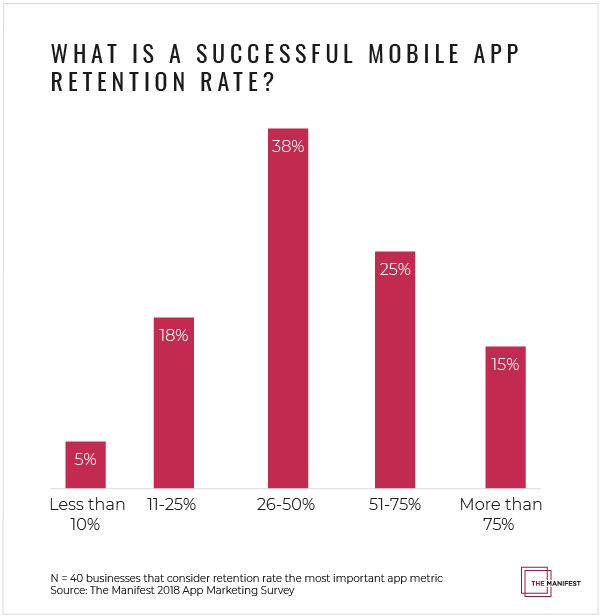
An app must immediately engage attention to retain a user.
A good retention rate can be extremely difficult to maintain. Matthew Raven, the vice president of marketing technology at Shift Communications, a data-driven PR firm based in Boston, discussed what qualifies as a successful retention rate.
“As a global average without industry-specific considerations, anything over 26% would be an outstanding retention rate,” Raven said. “To ensure customer return, create a personalized experience that adds immediate value to their life.”
To ensure customer return, create a personalized experience that adds immediate value to their life.
Businesses value daily active users because this metric provides insight into how many people are using their app. Retention rate further demonstrates how much users value an app and if they consider it worth keeping on their phones.
Monetize Your Daily Active Users to Make Money With Your App
As more people use an app, the easier it is for businesses to convert those users into revenue.
Surprisingly, only 14% of companies value average revenue per user when they track their app marketing success.
The lack of emphasis on user revenue demonstrates how businesses concentrate on building a following before making money.
“At the end of the day, if you’re not building an audience, if you’re not generating downloads, you’re not going to have that data to understand how to optimize against it,” said Jason Curry, senior director of marketing at Mutual Mobile, a global design and innovation consulting firm.
Businesses need to be careful not to disregard revenue for too long, though.
“If you’re not generating revenue over a two-year period and you’re still trying to find a market fit, you need to have a pretty hard conversation with yourself to see if this is really the thing,” Curry said.
One potentially successful structure for generating app revenue is the “freemium” model.
“Freemium” apps provide a base service for free but then charge for a premium experience. People tend to download the app, enjoy the free version, and then buy a subscription for higher-quality service.
Spotify, a music “freemium” app, highlights the potential success for this model. Spotify allows everyone to download the free version of their app, but this version limits song selection and integrates ads. Spotify Premium lets users listen to any music they want without ad interruptions.
Spotify has over 75 million monthly users with 20 million paying customers, which means the company has a 26.6% conversion rate from user to customer. Most “freemium” services barely reach a 1% conversion rate from free to paid content.
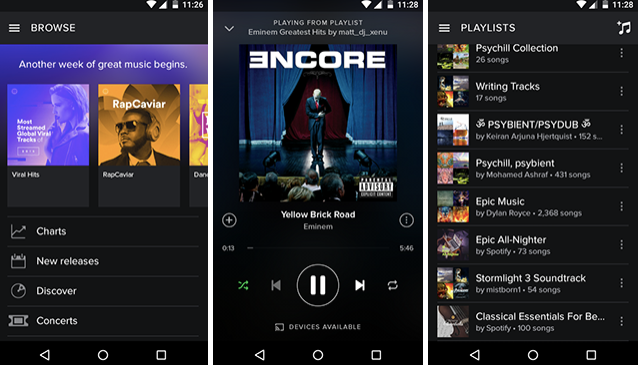
Spotify created a music experience that somewhat satisfied users, but left a gap in the ideal experience, creating a compelling reason for free users to convert to paid subscribers.
Another example is Slack, a workplace communication tool. The mobile and web app hit 8 million daily active users this year. With 3 million paid users, the company now has a valuation of $5.1 billion.
Slack provides businesses with an essential and unique service, increasing the likelihood of converting these businesses into paid subscribers.
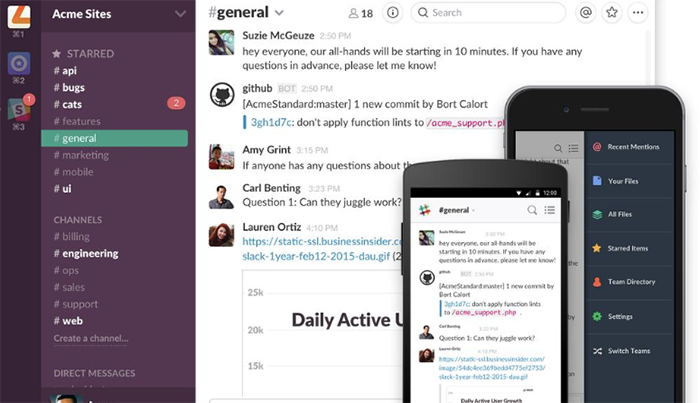
Slack remains the only app to beat Spotify’s conversion rate, with 30% of users switching from a free to paid subscription.
All companies want to increase their revenue. Many companies, however, know they need to curate a fan base before monetizing their platform.
Companies of All Sizes Believe in Paid App Marketing
Most app developers and marketers believe in the effectiveness of paid ads.
Nearly 7 out of 10 businesses (68%) pay for social media and search ads for their mobile app. Businesses invest in paid ads because they tend to have a higher return on investment than organic social media posts and search results.

With 3 billion people on social media, businesses can benefit from using paid ads on sites like Facebook, LinkedIn, Twitter, and Instagram.
“You can play with design, images and messages, all based on your app and brand voice. These social platforms allow you to engage with people better due to different ad formats,” said Anastasiia Marushevska, head of content at Django Stars, a product development company based in Ukraine.
Facebook ads allow companies to target location, gender, age, device, and interest.
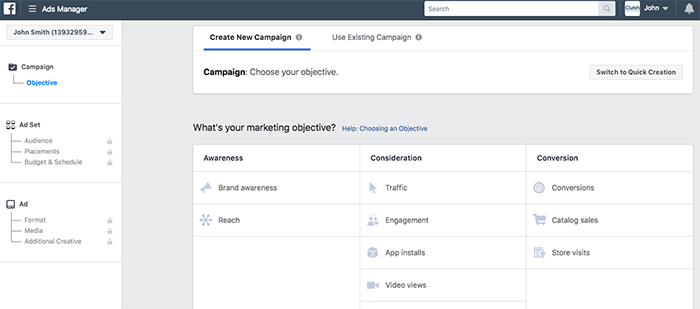
This targeting increases the chances of converting your company's social media audience to download its app.
The difference between organic and paid ads is visibility. Paid social media ads show up on the platform’s sidebars and are integrated throughout the user's experience to attract new views.
Larger businesses are more willing to invest in paid ads. Nearly three-quarters of companies with over 500 employees (72%) pay for both search and social ads. Only half of businesses with fewer than 50 employees do the same.
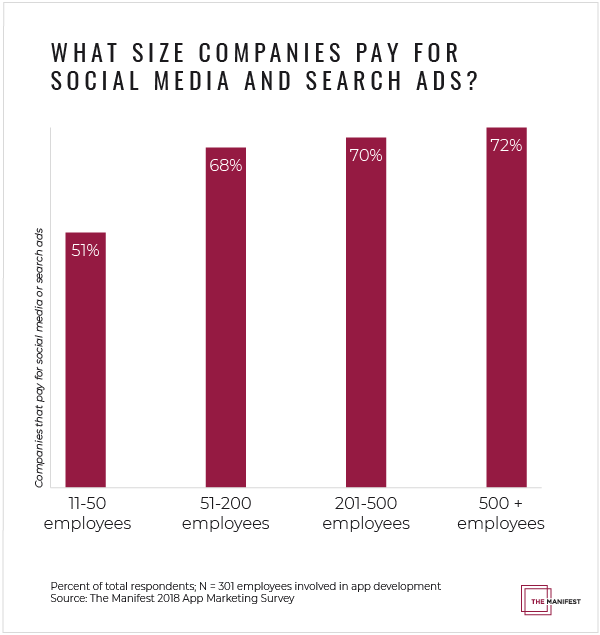
Companies should plan their paid advertising carefully. Online advertising is competitive and expensive, so release ads when an app is most likely to draw attention. A costume app's company should launch its marketing campaign during Halloween to attract the most interest.
Companies can track their app’s analytics to see which ad gives them the largest return on investment.
Paid ads can be expensive, but the potential benefits often outweigh the cost.
Most Companies Hire Outside Agencies to Help with Marketing
Companies should consider hiring an app marketing agency to help them execute that marketing plan.
Nearly two-thirds of app development companies (65%) partner with either a mobile app marketing or digital marketing agency.
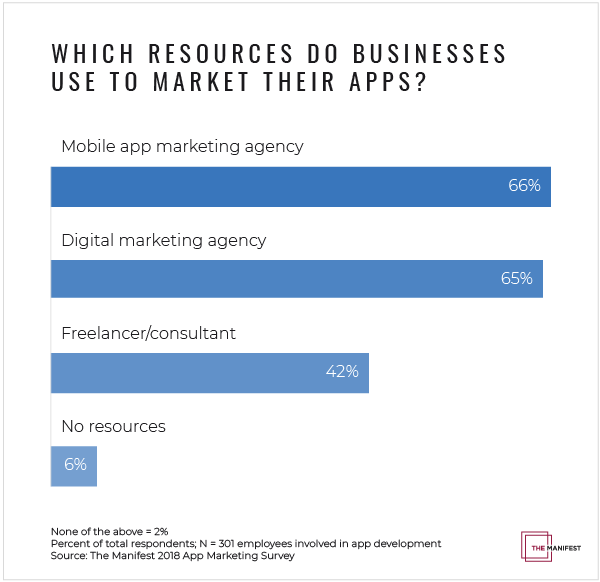
Mobile app marketing agencies offer a number of benefits, especially to businesses with minimal marketing knowledge. These benefits include:
-
Marketing expertise: Companies should find an agency that successfully launched an app marketing campaign.
-
Industry connections: An agency could have networks within advertising and promotional platforms.
-
Tools: An agency already has certain marketing tools and channels in place, such as Trello, Buffer, and HubSpot.
-
New perspective: Agencies can revamp a company’s image and provide new ideas.
Even if your company has an in-house marketing staff, it can still benefit from outside expertise.
Three-quarter (75%) of in-house marketing teams say their lack of skill impacts company revenue. A marketing agency can bridge this gap in knowledge and improve a company’s understanding of their industry’s best practices.
Joyce Ong, a mobile marketing specialist at Marketing Tech, a mobile marketing consultancy and app developer in the UK, said that marketing agencies can help in-house staff better communicate the value of their product.
“If there’s a marketing team in the company, a marketing agency should train them to make sure they understand the benefits of using the app.” said Joyce.
Every employee should be able to speak about the benefits of their company’s product.
Make Your App Marketing Count
To help an app succeed, companies must be able to track its success and market it effectively.
Businesses primarily focus on social media when marketing their app, followed by ASO. The combination of a great social media campaign and improved ASO boosts downloads and traffic.
Daily active users indicate the potential for a paid subscriber base. As more people depend on an app, companies can make money through premium content.
Paid search and social ads contribute to app awareness, which may convert to downloads. The majority of businesses that have developed an app pay for online ads.
It is important to understand the value of an outside marketing agency that can bring your app promotion efforts to a new level.
About the Survey
The Manifest surveyed 301 app developers and marketers from businesses across the U.S.
Most survey respondents are managers (34%), directors (15%), C-level executives (14%), and senior managers (10%).
Nearly three-fourths (73%) of respondents lead their company's app development and marketing while 27% of respondents play an active role in the app's development and marketing.
Over one-third (36%) of the companies surveyed have more than 500 employees; 37% of businesses surveyed have less than 200 employees.
